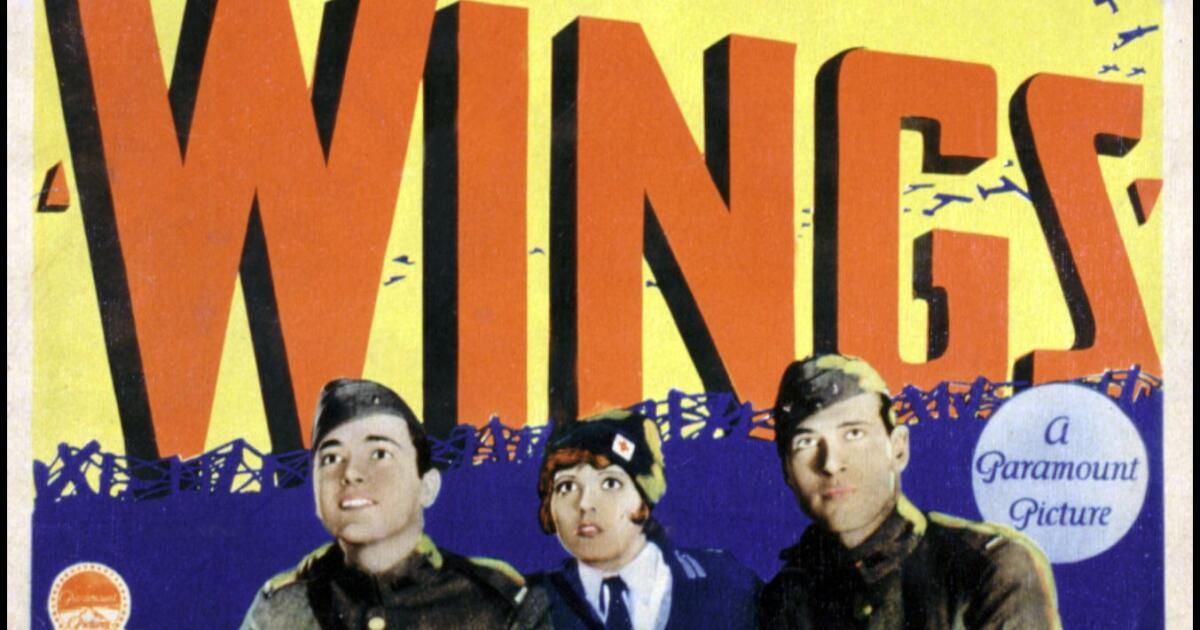It's especially noteworthy that there is still no Oscar category for stunt coordinator because at the first Academy Awards, the film that won best picture did so by showcasing impressive stunt work. He 1927 film “Wings” was nominated in only one other category (engineering effects) when it took home the trophy for what was then called “Outstanding Film.”
Since then, the academy has selected 15 more war films as the best of the year, with “Oppenheimer” expected to land at No. 17 this weekend. Most of them supported by the Brave men and women who put themselves in danger. to make the cinematic experience as realistic as possible.
opinion columnist
LZ Granderson
LZ Granderson writes about culture, politics, sports, and living life in America.
That's how “Wings,” a love triangle movie set during World War I, could win the night's top award without its actors, director or writers receiving a nomination. That doesn't mean they weren't snubbed (if you believe that). But voters were clearly amazed by the coordination of a dozen tanks, hundreds of planes and 5,000 extras (soldiers, really). The film was shot in San Antonio. —affectionately known as Military City—where the War Department was eager to support films featuring patriotism. In current figures, it is estimated that the government provided the “Wings” filmmakers with more than $250 million in labor and equipment. Directed by William Wellman, a war pilot who was shot down by the Germans in 1918, the film is preserved in the Library of Congress.
Over the decades, technology has allowed creatives to bring fictional galaxies to Earth and bring extinct dinosaurs back to life. And the Academy of Motion Picture Arts and Sciences has come to recognize the narrative contributions of the special effects industry. The same goes for sound, hair and makeup, costume design. And yet, stunt coordinators still don't receive any status. Clearly the academy loves war movies, and yet the people most responsible for making those movies feel real aren't celebrated.
Not to mention, there would be no summer blockbusters or slapstick comedies without stuntmen, because not everyone is cut out for the life of Tom Cruise. The actor is famous not only for doing his own stunts but also for breaking his own bones. And not only him. Daniel Craig has done several interviews talking mainly about the Dozens of injuries that occurred with James Bond's stunt work. – and keep in mind that he didn't do all the stunts in the movies.
Many members of the “Black Panther: Wakanda Forever” cast and crew had to learn to swim before filming began because half of the film takes place underwater. Incredibly, that film's aquatic stunt team worked with rookies and helped turn a comic book movie into an Oscar winner. And sadly, there was no way to celebrate his critical work on the film industry's biggest night.
After seven films and 30 years of Cruise running across rooftops and jumping out of planes, his “Mission Impossible” series finally received two Oscar nominations: for best sound and best visual effects. Wouldn't it be nice if by the time the eighth installment is released in 2025, there was a stunt coordinator category waiting for it?
“Braveheart” as we know it (which won best picture in 1996) could not have existed without a stunt coordinator. The same with “Platoon” (in 1987), “Deerhunter” (in 1979), “Patton” (in 1971).
What is “Lawrence of Arabia” (which he won in 1963) without the stunts performed on camelback? In fact, Peter O'Toole, who received an honorary Oscar in 2002, nearly died while making the film after a gun meant to signal the start of a scene went off prematurely. O'Toole's camel was startled and fell as a stampede of horses approached. Fortunately, the camel was trained to protect it from harm.
The tragedy surrounding the making of “Rust” and the death of cinematographer Halyna Hutchins is a painful reminder that filmmaking is not without its dangers. And the people responsible for coordinating the exciting stunts are also the ones who minimize the danger.
Not only that. They are also usually the ones who guarantee the laughs.
Earlier this year Conrad Palmisano passed away. Be sure to look for it in the “In Memoriam” segment of the broadcast. He was stunt coordinator for “Weekend at Bernie's,” “Sleepless in Seattle” and the “Rush Hour” sequels, among other classics. The man was an icon, whose stunt work dates back to the A-Team.
“Richard Burton once complained to me,” Palmisano remembered in an interview. “He said, 'I do a Shakespeare soliloquy and I get nothing from the team. You fall down some stairs and everyone applauds. I said, 'What are you complaining about? You are married to Elizabeth Taylor. “
It's a great joke about the gulf between Hollywood stars and the stuntmen responsible for some of our most visceral responses in the theater. As a member of the academy, Palmisano lobbied for years to have the Oscars formally recognize his field's contribution to the industry.
Coming back all the way to the First awards ceremony, in 1929., it has become clear that stunts are essential to good filmmaking. That's why when it comes to the topic of Oscar snubs, this one seems to be the biggest every year.
It's also something the academy could easily remedy.












